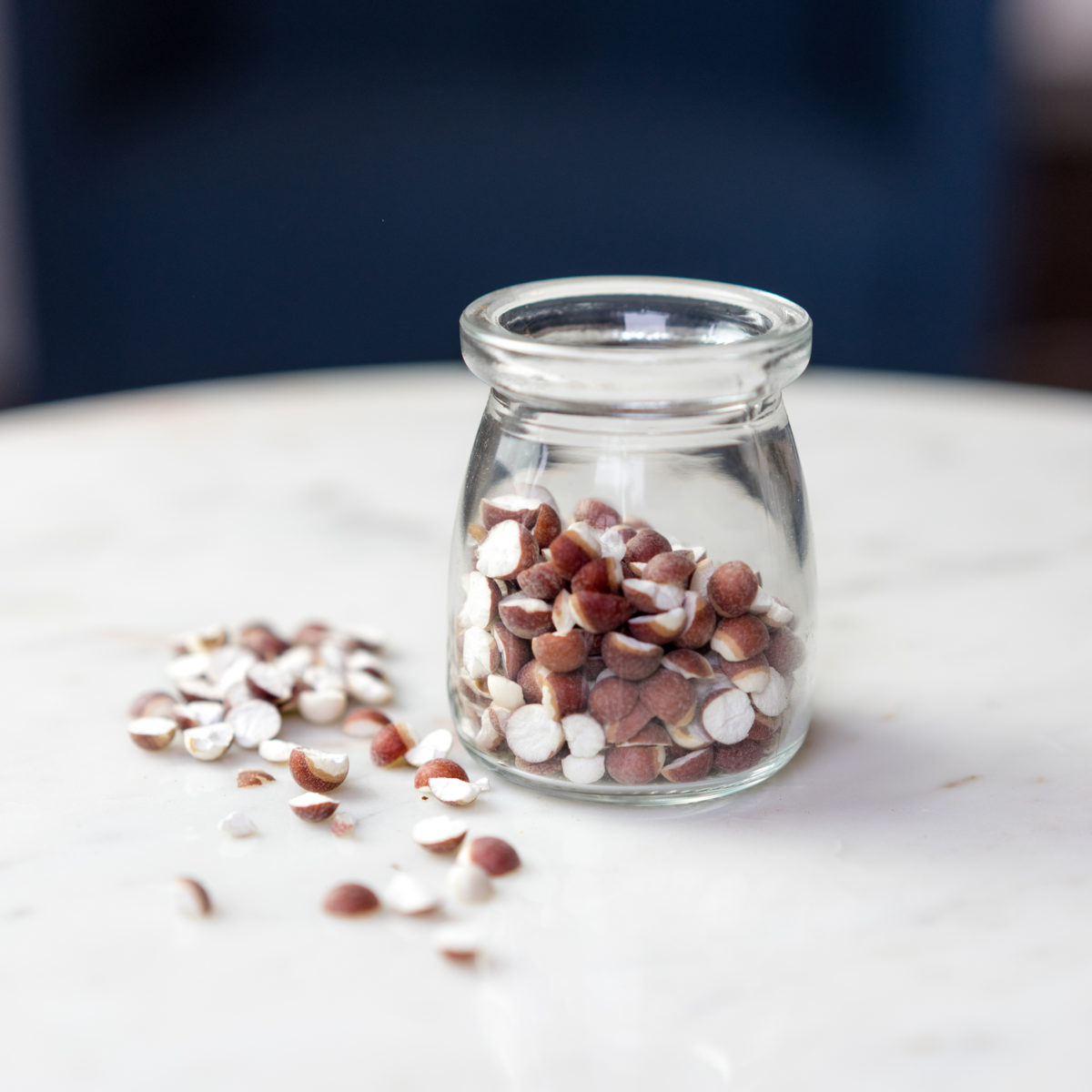
COMMON NAME (Chinese Name)
Euryale Seed (Qiàn shí)
BOTANICAL NAME
Euryale Ferox
USES
Euryale is perhaps most practical for use as an antioxidant and anti-fatigue therapy. Oral supplementation with ethanol-based fox nut extracts may also have a moderating effect on diabetes, as it may inhibit the development of complications of diabetes (like pancreatic, liver, and kidney damage). More research (including clinical trials in humans) is needed to confirm this result. That said, it would make sense given the antioxidant and protective activities of the most common bioactive compounds found in Euryale extracts. Anecdotal evidence and some limited empirical evidence also exists to support the use of fox nut seed supplements in the treatment of chronic diarrhea (and it may have stronger anti-diarrheal effects than the similarly situated lotus seed).
Euryale seed is a food-grade herb classified in Chinese medicine as an herb that stabilizes and binds, hence stops diarrhea. The herb is classified as neutral, sweet and astringent and goes to the Kidney and Spleen.
PREPARATION & ADMINISTRATION
Euryale Seeds supplements nearly always make use of only the seeds harvested from mature Euryale Seeds plants. These seeds then need to be washed, dried (and often hulled), before being decocted and/or crushed before oral use. Though very similar to Lotus seeds, Euryale Seeds are a distinct medicinal herb. Nevertheless, some herbal medicine practitioners and providers treat the two seeds synonymously despite their differing effects
In a preparation that is also unique from Lotus seeds, Euryale Seeds can be made into flour and used for traditional baking recipes. Likewise, foods with added Euryale retain some of the medicinal benefits of Euryale Seed supplementation, even through microwave cooking (though steam cooking is better)! As a result, Euryale Seed powder is not an uncommon ingredient in traditional Chinese recipes, and it can also often be found in modern pre-made food products in China (including baby food).
PRECAUTIONS
There isn’t much available information concerning the potential side-effects and contraindications for the use of Euryale supplements, especially in powdered form as a food supplement. That said, you should be careful to follow the lowest possible dosing instructions when using Euryale supplements, and be observant of your own (and others’, especially children’s) reactions to new Euryale use on or food sensitivity.
You should consult with a certified herbalist, physician or other qualified healthcare professional before taking Euryale.
REFERENCES
Ahmed, D., Kumar, V., Verma, A. et al. Antidiabetic, antioxidant, antihyperlipidemic effect of extract of Euryale ferox salisb. with enhanced histopathology of pancreas, liver and kidney in streptozotocin induced diabetic rats. SpringerPlus 4, 315 (2015). https://doi.org/10.1186/s40064-015-1059-7
Biswas, A.k., et al. “Effect of Different Cooking Methods on Retention of Antioxidant Activity of Bioactive Compounds of Fox Nut (Euryale Ferox) Seeds Incorporated in Chicken Meat Bites.” Indian Journal of Poultry Science, vol. 51, no. 1, 2016, p. 88., doi:10.5958/0974-8180.2016.00002.7.
Francis, Aditya. “Major Health Benefits and Functional and Sensory Properties of Cookies Prepared from All Purpose Flour Supplemented with Fox Nut.” International Journal of Research and Engineering, vol. 5, no. 5, 2018, pp. 411–421., doi:10.21276/ijre.2018.5.5.6.
Kumari, Rima & Jakhar, Dan & Kumar, Pankaj. (2019). NUTRITIONAL AND MEDICINAL IMPORTANCE OF MAKHANA (Euryale ferox Salisb.). 4. 2019.
Song, Chang-Wei, et al. “Isolation and Identification of Compounds Responsible for Antioxidant Capacity of Euryale Ferox Seeds.” Journal of Agricultural and Food Chemistry, vol. 59, no. 4, 2011, pp. 1199–1204., doi:10.1021/jf1041933.
Wu, Chengying, et al. “Antioxidant and Anti-Fatigue Activities of Phenolic Extract from the Seed Coat of Euryale Ferox Salisb. and Identification of Three Phenolic Compounds by LC-ESI-MS/MS.” Molecules, vol. 18, no. 9, Sept. 2013, pp. 11003–11021., doi:10.3390/molecules180911003.
